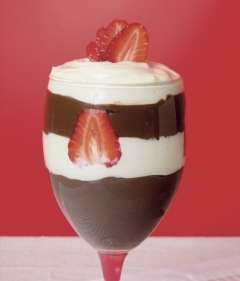
The elements of taste, raw chocolate desserts
By Joel MacKenzie, Staff Writer
Instant kimchi for breakfast, lunch, and dinner? No way! College Cooking is here to provide recipes, ideas, and healthy eating information to help post-secondary students create healthy, unique, satisfying food for cheap.
Knowing how our tongues react to tastes can help one find replacements for unhealthy foods that would elicit the same reaction from the tongue. Flavour involves the interaction of many elements, including textures, piquance (spiciness), scents, etc., but taste is nonetheless a major part of interesting eating.
When the tastebuds on the tongue, throat, and the roof, sides, and back of the mouth interact with different tastes, they release chemicals that stimulate different responses in the brain. Theoretically, animals have evolved to have pleasurable chemicals released while tasting food that is more nourishing, and vice versa, so that nourishing foods will be consumed, and dangerous ones not. The different tastes that the tongue reacts to are sweet, bitter, sour, salty, and umami (or fatty/savoury).
So if you want to substitute an unhealthy food with a healthier one, consider the tastes that go into the food you want to replace that make it enjoyable. For instance, bacon is very high in fat, particularly the unhealthy saturated and trans types; replacing bacon in a sandwich with avocado will still provide the fatty acids that make it taste good, but with healthier forms of fats, like essential fatty acids omega-3 and omega-6, and “healthy” monounsaturated fatty acids. A sweet alternative to candy is dried fruit, like dates or apples. These are sweeter than regular fruits, being dehydrated, but can have tons of vitamins, minerals, and fibre—elements that contribute to a healthier body and a feeling of fullness.
Of course, healthier options can still be very high in sugar and fat, which could potentially provide excess calories. Sweets and desserts must still, therefore, be enjoyed in moderation.
[hr]
Raw chocolate mousse, buttercream frosting, and chocolate ice cream
Continuing my list of raw dessert recipes for this month, this week we feature raw vegan chocolate mousse, with variations to use either buttercream frosting or chocolate ice cream, courtesy of Jennifer Cornbleet, from her blog, Raw Food Made Easy (learnrawfood.com)! Jennifer also has a book filled with more raw recipes called Raw Food Made Easy for 1 or 2 People Revised filled with entrees, dips, desserts, and a whole lot more.
These raw recipes are a great example of using replacement ingredients to add vitamins, minerals, and healthy fats to a classic recipe. In them, avocado and dates replace sugar, butter, and cream.
Ingredients
1⁄4 cup pitted Medjool dates, soaked
1⁄4 cup pure maple syrup or agave nectar
1⁄2 tsp vanilla extract (optional)
3⁄4 cup mashed avocados (1 1⁄2 avocados)
1⁄4 cup plus 2 tbsp unsweetened cocoa or carob powder
1⁄4 cup water
Process the dates, syrup, and vanilla in a food processor until smooth. Add the avocado and cocoa powder and process until creamy. Stop occasionally to scrape down the sides of the bowl with a rubber spatula. Add the water and process briefly. Stored in a sealed container, the chocolate mousse will keep for three days in the refrigerator or two weeks in the freezer. Serve chilled or at room temperature.
Variations
For chocolate buttercream frosting: omit the water.
For chocolate ice cream: freeze the chocolate mousse for at least four hours. Allow to thaw for 15 minutes before serving. Stored in a sealed container, chocolate ice cream will keep for one month in the freezer.


